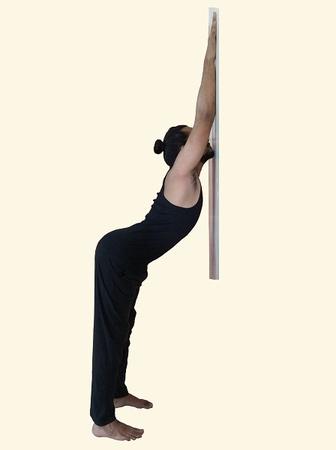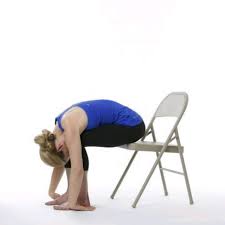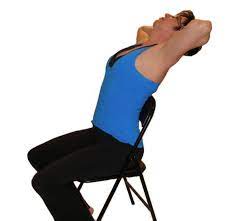

If you are like me, sitting hunched over a desk for long hours, you have probably noticed a little more slouch in your upper back and neck than you would like.
The culprit?
Forward head posture, a common problem in today’s technology-driven world.
This condition, where the head protrudes too far forward, can lead to a slew of health issues, including neck pain, headaches, and poor posture overall.
One of the best ways to combat this is by focusing on stretching and strengthening the upper back to restore proper alignment.
In this article, I will walk you through the steps to stretch and strengthen the upper back to help correct forward head posture.
Based on my personal experience and backed by science, these exercises will help you regain your natural posture, alleviate pain, and feel more confident in your stance.
Article Index:
- Introduction to Forward Head Posture and Its Impact
- Understanding the Role of the Upper Back in Forward Head Posture
- Why Stretching the Upper Back is Crucial for Posture Correction
- Best Exercises to Stretch the Upper Back and Correct Forward Head Posture
- Daily Lifestyle Tips for Maintaining a Healthy Upper Back
- Conclusion: Correcting Forward Head Posture with Upper Back Stretches
Introduction to Text Neck and Its Impact
Text neck occurs when the head is positioned forward of the body’s natural center of gravity.
When viewed from the side, your ear should ideally align with your shoulder. However, in FHP, the head shifts forward, placing strain on the neck, shoulders, and upper back.
This posture issue is often caused by poor sitting habits, excessive screen time, and prolonged use of devices like smartphones and laptops.
Over time, this misalignment can lead to muscle imbalances, including the weakening of the upper back muscles.
To fix upper back posture, it is essential to focus on stretches and exercises that strengthen the muscles and restore proper alignment.
By correcting FHP, you can reduce neck pain, headaches, and even improve your overall posture.
Understanding the Role of the Upper Back in Forward Head Posture
The upper back, also known as the thoracic spine, plays a crucial role in maintaining good posture.
When the muscles in the upper back are weak or tight, they struggle to support the weight of the head, leading to a slouched, forward-leaning position.
Think of the upper back as the foundation for your neck and head—when the foundation is weak, everything above it suffers.
The muscles responsible for upper back posture include the trapezius, rhomboids, and rear deltoids.
These muscles work together to pull the shoulders back, support the head, and maintain a neutral spine.
Unfortunately, most of us spend our days hunched over a desk or phone, causing these muscles to weaken over time.
The key to correcting forward head posture lies in upper back posture correction exercises that stretch and strengthen these muscles, allowing your body to return to its natural alignment.
Why Stretching the Upper Back is Crucial for Posture Correction?
You may be wondering why stretching is so important for fixing forward head posture.
The answer is simple: tight muscles in the chest and shoulders can pull the upper body forward, while weak muscles in the upper back cannot pull it back into alignment.
This combination leads to the classic rounded shoulders and slouched appearance associated with FHP.
By incorporating upper back and neck posture exercises, you can loosen up tight muscles and strengthen weak ones, which will help to balance your body and restore proper posture.
Stretching the upper back helps increase flexibility in the thoracic spine, allowing for a greater range of motion and reducing strain on the neck and shoulders.
Best Exercises to Stretch the Upper Back and Correct Nerd Neck Posture
Now that we have covered the importance of stretching, let us dive into the most effective upper back exercises for posture that can be done at home.
These exercises target the muscles responsible for holding your upper back in the correct position, improving strength and flexibility.
1. Cat-Cow Stretch
The cat-cow stretch is a fantastic exercise for mobilizing the thoracic spine and relieving tension in the upper back. It’s a yoga-inspired move that helps improve flexibility and reduce stiffness.
- Start on all fours with your hands under your shoulders and knees under your hips.
- Arch your back toward the ceiling, tucking your chin to your chest (cat pose).
- Then, lower your belly toward the floor while lifting your head and tailbone (cow pose).
- Repeat this movement 10 times, slowly flowing between the two positions.
2. Thoracic Spine Extension Stretch
This is one of the best upper back posture exercises at home. It specifically targets the muscles around the thoracic spine, helping to release tightness and encourage proper alignment.
- Sit on a chair with a rolled-up towel placed vertically along your spine.
- Lean back over the towel, extending your upper back over it as far as is comfortable.
- Hold this stretch for 20-30 seconds, then repeat 3-5 times.
3. Wall Angels
Wall angels are great for correcting rounded shoulders and improving upper back strength. This exercise encourages the engagement of the upper back postural muscles.
- Stand with your back against a wall, making sure your heels, lower back, and head touch the wall.
- Raise your arms up to form a “W” shape, keeping your elbows and wrists against the wall.
- Slowly extend your arms overhead, maintaining contact with the wall throughout the movement.
- Return to the starting position and repeat 10-12 times.
4. Scapular Retractions
This is an effective exercise for strengthening the muscles between your shoulder blades, which can help correct the forward head posture.
- Sit or stand with your arms at your sides.
- Squeeze your shoulder blades together as if you are trying to hold a pencil between them.
- Hold the contraction for 5 seconds, then relax.
- Repeat this movement 10-15 times to strengthen upper back postural muscles.
5. Child’s Pose with Thoracic Extension
A simple yet effective stretch for relieving tension in the upper back and neck, this stretch is ideal for anyone dealing with FHP.
- Start in a kneeling position with your knees apart and big toes touching.
- Reach your arms forward and lower your forehead to the floor.
- Hold this stretch for 30 seconds to 1 minute to release tension in the upper back and lengthen the spine.
These exercises to strengthen the upper back and improve posture are not only great for correcting forward head posture but also for reducing upper back pain, improving flexibility, and promoting better spinal alignment.
Daily Lifestyle Tips for Maintaining a Healthy Upper Back
While exercises are essential, your daily habits also play a huge role in maintaining proper posture.
Here are some practical tips based on my experience that can help prevent forward head posture from creeping back into your life:
- Set up an ergonomic workspace: If you spend most of your day sitting at a desk, make sure your computer screen is at eye level and your chair supports your lower back. This can prevent slouching and strain on the upper back.
- Take frequent breaks: Every 30-60 minutes, stand up, stretch, and walk around to relieve tension in the upper back. Simple upper back posture exercises at home like scapular retractions or shoulder rolls can make a big difference throughout the day.
- Practice good posture: Keep your head aligned with your spine and your shoulders pulled back. Be mindful of your posture throughout the day, whether you’re sitting, standing, or walking.
- Incorporate upper back exercises regularly: Make a habit of doing exercises for rounded upper back as part of your daily routine. These exercises will not only fix your posture but also help you maintain long-term results.
Correcting Crane Neck Posture with Upper Back Stretches
In conclusion, forward head posture is a common issue that many of us face in today’s sedentary world.
The good news is that it is completely fixable with the right approach.
By focusing on exercises to strengthen the upper back and improve posture, you can reverse the effects of forward head posture and regain your natural alignment.
Through stretching and strengthening the upper back, you are not only reducing pain and tension but also preventing further problems down the road.
The exercises we have discussed—like wall angels, scapular retractions, and thoracic spine stretches—are simple yet highly effective in correcting your posture and keeping your upper back healthy.
The solution to fixing forward head posture lies in consistency.
By incorporating these upper back posture corrector exercises into your daily routine, along with maintaining an active and mindful lifestyle, you will be well on your way to a stronger, pain-free upper back and neck.
References:

